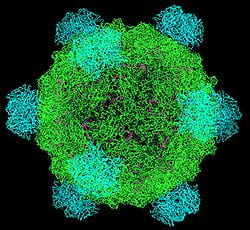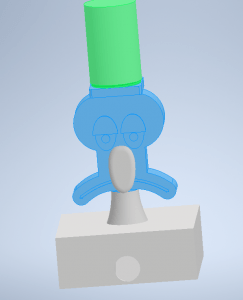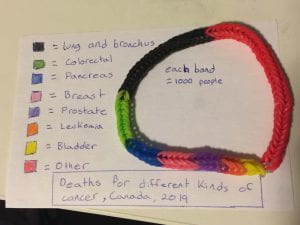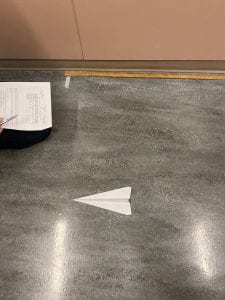Whole genome sequencing in an incredible form of biotechnology that has many different uses and can serve as the basis of much more scientific research and advancement to be made. Whole genome sequencing is a process where scientists will be able to sequence your genome and find if there are any errors that will lead to underlying medical conditions that need to be addressed. How whole genome sequencing works is that you will have to give a sample of your DNA (most commonly in the form of blood). Once the DNA is extracted, because DNA is too large, it is broken up by high frequency soundwaves into much smaller and manageable chunks that are approximately 600 bases long. Then tags get added to the ends of the DNA fragments where they are then put on a glass slide to be sequenced. The sequencer will determine the sequence of the bases on each DNA fragment. Once every section of DNA has been sequenced, it will be put together and compared to another human genome. This is because scientists will observe to see if there are any slight changes in the genome that is causing the patient to have any sort of medical condition or trait. Therefore, the use of whole genome sequencing is to find out what is wrong with the patients’ genome to see if it can be resolved.

Whole genome sequencing has come a long way in a relatively short period of time. It started in around 1977 where Fredrick Sanger developed a technique to find the genome of a virus called Phi X 714. Then in 1995, the organism called Haemophilus influenzae was the first organism to have the entirety of its genome sequenced. These were done first because the genome was much smaller than one of a human, so it made sense to start whole genome sequencing on bacteria and viruses such as these. Then in 1990, a project started called the Human Genome Project (HGP). As you could imagine, the goal of this project was to discover what the human genome is. This project ended in 2003 where scientists and researchers were confident about what the sequence of the human genome is. This project to sequence one human genome costed around 2.7 billion dollars but today it only costs around 1000$ to have your entire genome sequenced. Having this information is crucial because it allows much further research and technology to be advanced now that we know the sequence of the human genome.


An example of a technology is we can all get our genome tested today, and from that information, we can have results for many different things such as what foods we should eat or even where our ancestors came from. Many companies such as 23andMe use the same type of technology used for whole genome sequencing, but instead of sequencing the entire genome, they only sequence approximately 600 000 of the 3 billion nitrogen-based pairs on what they call “snips” which is in their opinion, the more relevant parts of the genome to determine where your ancestors are from. Using this technology, it is even cheaper than the 1000$ to get your entire genome sequenced and it is only around 200$. The only downside to this is that it will not be as accurate information only using 600 000 nitrogen base pairs, but the cost is only a fraction of getting your entire genome sequenced so it is possibly worth the money.


The uses with knowing the human genome and the capability to know the sequence of any human’s genome leads to endless possibilities. The very best usage would be by helping families answer their questions about their child who may possibly have an underlying medical condition. Families will compare the results of their child with somebody who doesn’t have the condition to see where the slight change in the sequence that is causing the child to have this condition. This works well because approximately 99.9% of the human genome is identical within all humans. This means that the small 0.1% of our genome that is unique is what differentiates us from everyone else. What I also found crazy while conducting my research was that Chimpanzees have 99% of the same genome as humans which leads me to believe even more that we all used to be one species. In addition to this, knowing the human genome assists in pharmacogenomics because the data collected from the patients can assist in determining the dosage and the response of certain medications given to the patients.


The beautiful thing about Whole Genome Sequencing and knowing the human genome is that it opens the door to so much more biotechnology to come. An example of another biotechnology is human genetic modification and gene editing which will allow us to change someone’s genes, this is starting to become a possibility with the help of Whole Genome Sequencing because we can see which nitrogen bases affect what traits and we can modify that. Another example is at Human Longevity (San Diego based company) while gathering data about people at the age of fifty and up, around 5% of them had a major cancer they weren’t aware of. New technologies can be created using whole genome sequencing to find out if there’s a chance you might develop cancer based on data from your genome and your ancestor’s genome. Companies like Human Longevity are doing great work into the future of this form of biotechnology as their goal is to find solutions to battle diseases that are linked with age.


Whole Genome Sequencing is an amazing form of biotechnology and it’s going to be the basis for so many more types of technology and advancements in the future. At the moment, it has made a huge impact on so many people and their families because it can discover the underlying medical conditions of the patients and can also reveal so much more information to you. It gives families an answer for what is happening with their child and if it can be treated or not. It has also saved the lives of many children who could be suffering from a really bad condition and needed to have answers immediately. It is a very good technique to get to the bottom of genetic problems and will continue to help our world.
Resources:
OpenStax College, Concepts of Biology. OpenStax College. 25 April 2013. <http://openstaxcollege.org/textbooks/concepts-of-biology/get>
Nicklaus Children’s Hospital. What Is Whole Genome Sequencing? 12 Feb. 2020, www.youtube.com/watch?v=sNWAE7YdZ_U.
Health, Slingshot. “Top 10 Breakthroughs of the Human Genome Project.” Slingshot Health Blog, 25 Apr. 2019, www.slingshothealth.com/blog/2019/04/25/top-10-breakthroughs-of-the-human-genome-project/.
Mayo Clinic. What Is Genomic Sequencing? 7 Feb. 2018, www.youtube.com/watch?v=2JUu1WqidC4&t=11s.
Venter, Craig. “Opinion | Genetic Sequencing Is the Future of Medicine.” The Washington Post, WP Company, 13 Dec. 2017, www.washingtonpost.com/news/theworldpost/wp/2017/12/13/human-genome/.
Images:
AL, Cirino. “A Comparison of Whole Genome Sequencing to Multigene Panel Testing in Hypertrophic Cardiomyopathy Patients.” Genomes to People, www.genomes2people.org/publications/a-comparison-of-whole-genome-sequencing-to-multigene-panel-testing-in-hypertrophic-cardiomyopathy-patients/.
“Difference Between DNA Genotyping & Sequencing.” 23andMe Customer Care, customercare.23andme.com/hc/en-us/articles/202904600-Difference-Between-DNA-Genotyping-Sequencing.
EnserinkMar, Martin, and Amanda HeidtMay. “Interested in Responsible Gene Editing? Join the (New) Club.” Science, 28 Mar. 2018, www.sciencemag.org/news/2018/03/interested-responsible-gene-editing-join-new-club.
“Improve Your Gene Editing Success with CRISPR-SNIPER Technology.” GEN, 20 Nov. 2019, www.genengnews.com/sponsored/improve-your-gene-editing-success-with-crispr-sniper-technology/.
Pal, Shital. “Human Genome Project.” LinkedIn SlideShare, 4 Nov. 2014, www.slideshare.net/shitalpal3/human-genome-project-41108918.
Saey, Tina Hesman. “What Genetic Tests like 23andMe Actually Told Me about My Health.” Science News, 21 Aug. 2019, www.sciencenews.org/article/review-genetic-tests-23andme-veritas-genos-health-comparison.
“Whole Genome Sequencing (WGS).” Whole Genome Sequencing (WGS) | Mérieux Nutrisciences Europe, 2018, www.merieuxnutrisciences.com/eu/food-safety-and-quality/contract-research/next-generation-sequencing-ngs/whole-genome-sequencing-wgs.
By Fdardel – Own work, CC BY-SA 3.0, https://commons.wikimedia.org/w/index.php?curid=6296568
